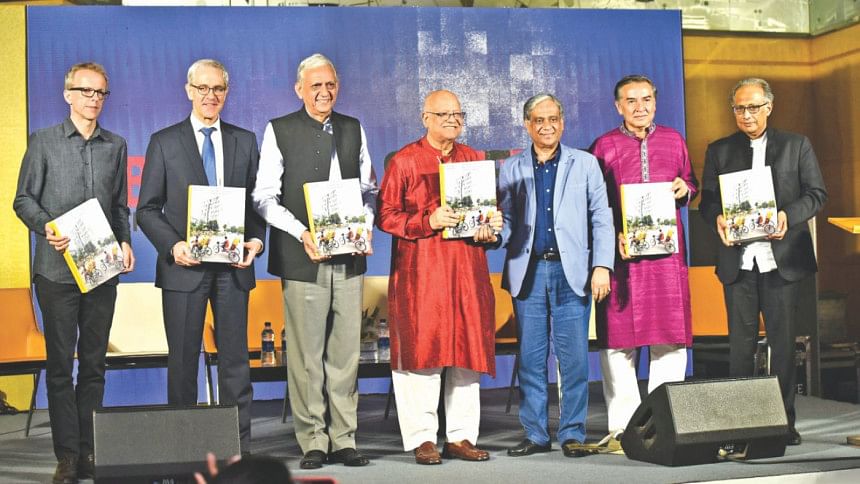Taking Bangladesh's architectural heritage to the World

Not many people may know this, but bungalows, found today all over the world and a ubiquitous symbol of a tasteful, luxurious life, originated from this region of the world, with even the name 'Bungalow' being an ellipsis of the Bangla to denote a house made in that particular style. This region of the world has a distinctive architectural style that may have been falling off the radar in recent decades, but that is where the Bengal Institute for Architecture, Landscapes and Settlements has been working hard in recent years – to take a look back at our glorious architectural history, as well as looking ahead to take the legacy forward in our planning of urban spaces and settlements.
An exhibition titled “Bengal Stream: The Vibrant Architectural Scene of Bangladesh” began last year on December 1 at the Swiss Architecture Museum in Basel, Switzerland, marking the first exhibit of its kind where the architecture of the country is on display for a European audience. While the exhibition runs till May 6 there, and is set to travel to other cities of Europe, a book accompanying the exhibition has also been published. Bengal Institute launched the book, titled the same as the exhibition, in a ceremony at hotel The Westin Dhaka on Friday.
Finance Minister AMA Muhith attended the event as chief guest, while Swiss Ambassador to Bangladesh René Holenstein, Prime Minister's Foreign Affairs advisor Gowher Rizvi and The Daily Star editor Mahfuz Anam were present as special guests. Chairman of Bengal Foundation, Abul Khair presided over the session, where Bengal Institute DG Kazi Khaleed Ashraf and Swiss architect Niklaus Graber, the principal curator of the exhibition and the editor of the book, also spoke at the event. The event also saw presence of eminent diplomatic and cultural personalities.
“The architecture of Bengal has had an influence on global modern architecture of the 20th century, particularly in the genre of tropical architecture” Khaleed Ashraf said, highlighting the efforts of Muzharul Islam in spearheading the modernist architectural movement of Bangladesh and his connection to master architects like Louis I Kahn, Stanley Tigerman and Paul Rudolph.
Niklaus Graber spoke of the journey that “Bengal Stream” has been for him, from his first visit to Bangladesh in 2012 to the successful holding of the exhibition. “Contemporary Bangladeshi architecture is radical and modern but still connected to its roots,” he said, adding that “the whole world can learn from Bangladesh.” He also spoke about the accompanying programmes of the exhibition – including lectures, field programmes, a symposium and film screenings. The Swiss ambassador echoed his views, saying “This exhibition is a big success, as it introduces the Swiss and European audience at large to the remarkable work in architecture done in Bangladesh.”
AMA Muhith in his speech recalled his first contact with architecture, which came in 1951 during a field visit to the historic Sonargaon led by eminent Pakistani archaeologist Dr. Ahmad Hasan Dani. About the book, he said “This will be a valuable addition to anyone's collection who has an interest in Bangladesh.”
Gowher Rizvi also praised the exhibition and the book, adding: “The landscape and rivers of Bangladesh inspire the great architectural work being done in the region.”
Mahfuz Anam delivered an impassioned address about how Bangladesh – a country with such little space, high population density and sensitive climate - must plan every step of the use of land and rivers. He also thoroughly praised the photographs in the book – taken by internationally-renowned Dutch architecture photographer Iwan Baan, and the essays in the book – written by Swiss Architecture Museum director Andreas Ruby, Niklaus Graber, Kazi Khaleed Ashraf, Saif Ul Haque and Syed Manzoorul Islam.
The book, “Bengal Stream: The Vibrant Architecture Stream of Bangladesh”, has been published by Swiss independent publisher Christoph Merian Verlag and is priced at 7,500 taka.

 For all latest news, follow The Daily Star's Google News channel.
For all latest news, follow The Daily Star's Google News channel. 



Comments